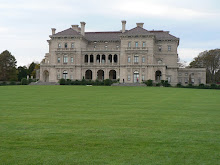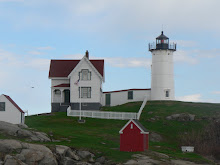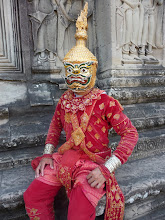 Recently Jonathan, our history buff, was reading a World War II book. He asked if we could go see a WWII site. He remembered going to Pearl Harbor, where he saw the oil from the USS Arizona still seeping to the top of the Pacific, watching, in black in white film, the Japanese Kamikazes attack the US Pacific Fleet, and learning about his relative who heroically sacrificed his life for the crew on the USS West Virginia, receiving the Medal of Honor. What other WWII site in the United States even exists? Where could we take him to see anything that would meet his expectations, I wondered. After some thought, I remembered reading in a guide book about Battleship Cove, the largest collection of Naval Ships in the world, which was in Fall River, Massachusetts. Last Saturday we loaded up the kids and headed about as far south in our state as we could go. As we approached the Atlantic, we spotted huge hunks of grey steel floating in the sea. We climbed from one ship to another, reliving different aspects of World War II's naval battles.
Recently Jonathan, our history buff, was reading a World War II book. He asked if we could go see a WWII site. He remembered going to Pearl Harbor, where he saw the oil from the USS Arizona still seeping to the top of the Pacific, watching, in black in white film, the Japanese Kamikazes attack the US Pacific Fleet, and learning about his relative who heroically sacrificed his life for the crew on the USS West Virginia, receiving the Medal of Honor. What other WWII site in the United States even exists? Where could we take him to see anything that would meet his expectations, I wondered. After some thought, I remembered reading in a guide book about Battleship Cove, the largest collection of Naval Ships in the world, which was in Fall River, Massachusetts. Last Saturday we loaded up the kids and headed about as far south in our state as we could go. As we approached the Atlantic, we spotted huge hunks of grey steel floating in the sea. We climbed from one ship to another, reliving different aspects of World War II's naval battles. 
The first stop on our tour was a Landing Craft, similar to the ones shown in the opening scenes of Saving Private Ryan. Our kids were interested in learning about and climbing on this simple boat that brought 120 troops onto Normandy Beach on D-day in 1944. We then toured a PT boat, identical to the one that brought JFK his glory for his heroic efforts to save his crew. We were interested to learn that these boats made up the Mosquito Fleet, engaging in stealth missions, usually shrouded in darkness.

We climbed aboard a destroyer, where we talked to a WWII veteran who showed us a map of the dozens of downed WWII Naval ships in the Atlantic and Pacific Oceans. Emilie and Jonathan were fascinated to learn of the cause of each sinking: hurricanes, water mines, submarine attacks, etc.

We finally made our way onto the USS Massachusetts, the pinnacle of the tour. This ship was known as "Big Mamie" by her crew, due to her power and large size. She was a "city on the sea", we were told. Her first mission was to North Africa where she destroyed a French battleship in just five shots. The kids were particularly interested in touring the eating and sleeping quarters of the ship, which 2000 sailors rotated through each day. We decided that "Big Maime" was entitled to her grand reputation.

Although we couldn't provide a family outing that was quite as impressionable as Pearl Harbor, our day was full of education, a sense of adventure and family togetherness.
 Recently Jonathan, our history buff, was reading a World War II book. He asked if we could go see a WWII site. He remembered going to Pearl Harbor, where he saw the oil from the USS Arizona still seeping to the top of the Pacific, watching, in black in white film, the Japanese Kamikazes attack the US Pacific Fleet, and learning about his relative who heroically sacrificed his life for the crew on the USS West Virginia, receiving the Medal of Honor. What other WWII site in the United States even exists? Where could we take him to see anything that would meet his expectations, I wondered. After some thought, I remembered reading in a guide book about Battleship Cove, the largest collection of Naval Ships in the world, which was in Fall River, Massachusetts. Last Saturday we loaded up the kids and headed about as far south in our state as we could go. As we approached the Atlantic, we spotted huge hunks of grey steel floating in the sea. We climbed from one ship to another, reliving different aspects of World War II's naval battles.
Recently Jonathan, our history buff, was reading a World War II book. He asked if we could go see a WWII site. He remembered going to Pearl Harbor, where he saw the oil from the USS Arizona still seeping to the top of the Pacific, watching, in black in white film, the Japanese Kamikazes attack the US Pacific Fleet, and learning about his relative who heroically sacrificed his life for the crew on the USS West Virginia, receiving the Medal of Honor. What other WWII site in the United States even exists? Where could we take him to see anything that would meet his expectations, I wondered. After some thought, I remembered reading in a guide book about Battleship Cove, the largest collection of Naval Ships in the world, which was in Fall River, Massachusetts. Last Saturday we loaded up the kids and headed about as far south in our state as we could go. As we approached the Atlantic, we spotted huge hunks of grey steel floating in the sea. We climbed from one ship to another, reliving different aspects of World War II's naval battles. 



























No comments:
Post a Comment